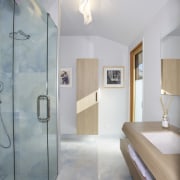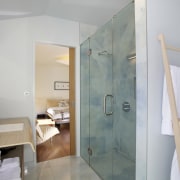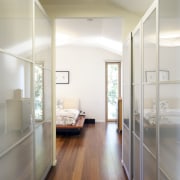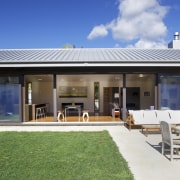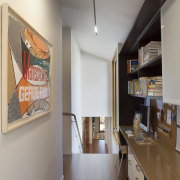Airtight solution the first vertified passive house in New Zealand by Darren Jessop
Certified passive home by Darren Jessop

Sustainable and green building technologies are watchwords of today but the passion for an energy-efficient lifestyle can be taken further. Imagine a home where the interiors are healthy, quiet and comfortable year round, and without the need for heating or air conditioning this is the outcome with passive house design.
When the owners of this house, Philip and Carolyn Ivanier, first approached architect Darren Jessop, they asked for a modern family home with open-plan living spaces and a degree of separation between the children's and adults' areas. Then, with the design already agreed, Ivanier made a game-changing request that the house be reconsidered to meet passive home standards so as to deliver an anticipated savings of 80% to 90% on fuel bills.
Virtually airtight, a passive house is well insulated and heated primarily by passive gain. This means the building's interior climate can be maintained at a comfortable level without active heating or cooling systems.
On this project, Jessop was the architectural designer, builder Chris Foley was the problem-solver, while Ivanier was more the researcher.
Passive housing is not a design style rather, it is a performance standard, says Jessop.

"So, while it would've been easier to achieve a passive house with a box form, here we were able to tweak the existing design, although the construction method changed dramatically."
Several key criteria must be met to achieve passive house certification, including orienting the house for maximum solar control. For example, windows are minimised on the south side of the home, where they would lose heat, and overhangs are extended to the north.
Another consideration for certification is an effectively insulated building envelope. This ensures heat is not lost in winter and similarly, that the house stays cool over warmer months.
Thermal bridge-free construction is also integral to the design, ensuring no heat is lost through the envelope by material transference. Insulating under the floor slab and footings, so nothing directly touches the earth, and the use of specialist structural wall connections mean this form of energy loss is virtually eliminated.
Ivanier says airtightness is also an important part of the passive house equation, achieved by specifying a purpose-specific, airtight building membrane. Lastly, a heat recovery ventilation system ensures that fresh, good-quality air is circulated at a comfortable temperature.
Jessop says a cross-section of a wall provides an indication of the complex engineering required to achieve the required outcome.
"First there is the cedar cladding, then a layer of Ecoply plywood there is no internal bracing followed by a 90cm cavity filled by insulation. Next to that is the airtight membrane and finally there is a 40mm cavity with further insulation and all the services, none of which penetrate the membrane."
The levels of insulation and provision of an airtight envelope mean a quiet, comfortable indoor environment year round, says Ivanier.
"An exciting moment in the design process is when the house is appraised for airtightness. A blower door' temporarily replaces the front door, air pressure is applied and the interiors are gauged for air loss. Near-zero loss points the way towards achieving the passive certification from the Passivhaus Institute in Germany, a world leader in this style of architecture."
Story by: Trendsideas
Home kitchen bathroom commercial design
Classic looks, contemporary efficiency
Diving into nature
Personality plus

